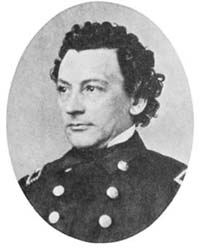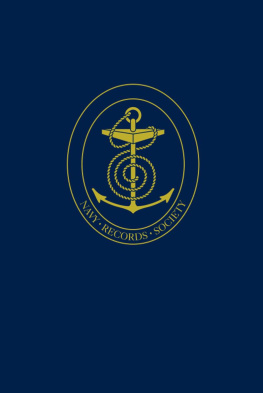
BENJAMIN FRANKLIN ISHERWOOD NAVAL ENGINEER
THE YEARS AS ENGINEER IN CHIEF, 1861-1869
BY
EDWARD WILLIAM SLOAN, III

UNITED STATES NAVAL INSTITUTE
Annapolis, Maryland
This book has been brought to publication by the generous assistance of Marguerite and Gerry Lenfest.
First Naval Institute Press paperback edition 2012
ISBN 978-1-61251-291-4
Copyright 1965
By United States Naval Institute
Annapolis, Maryland
Library of Congress Catalogue Card No. 6522011
To my son, Michael
Preface
The shot-and-shell approach to the writing of naval history has, for years, unnecessarily limited our knowledge and appreciation of the United States Navys role during time of war. Shunted aside by the romance of the broadside, naval technology and, in particular, naval administration have at best received brief mention. Consequently, those men who served behind the lines in wartime have earned scant historical notice, regardless of their immediate or ultimate contributions to the service and to their nation. Benjamin Franklin Isherwood is one such man.
Isherwoods naval career, spanning those forty years which saw the transition from the first steam warships of the 1840s to the birth of the modern American Navy in the 1880s, reached its zenith during his eight-year service, from 1861 to 1869, as engineer in chief of the Navy. During and immediately after the American Civil War, he exercised his greatest influence both in the Navy and in the world of engineering. It is proper, therefore, to begin his rescue from historical obscurity by presenting him at the most active, productive, and controversial time of his life.
In no sense is this book intended to be the full biography of Benjamin Isherwood. Rather, it is a study of that relatively brief period of his life which has the greatest historical significance.
This is the story of Isherwood as a naval officer and as an engineer. These two facets of his life were inseparable, and in both areas he engaged in bitter and widespread controversy during his entire tenure as engineer in chief. His considerable contribution to the development of marine steam propulsion and to the advancement of scientific techniques in experimentation equalled in importance his administrative services to the Navy, and as an engineering pioneer of the mid-nineteenth century, his career in the realm of technology was no less arduous than that in the Navy. His efforts to carry on these two careers simultaneously and successfully during a period of national crisis best demonstrate Benjamin Isherwoods remarkable talents, resourcefulness, and dedication to duty.
With no major collection of Isherwood papers on which to base this study, I have relied on the abundant, if incomplete, official records of the Navy Department deposited in the United States National Archives. From the collected papers of Gideon Welles, Gustavus Fox, David Dixon Porter, John Ericsson, and others, I have assembled additional material, especially personal reports and observations which supplement the departmental records and shed lightand often considerable heaton the career of Benjamin Isherwood.
Fortunately, Isherwoods granddaughter, Mrs. Madeleine Kerwin, of New York city, has been of invaluable aid in providing abundant and colorful recollections of his private life, especially for the period after his retirement from the Navy. Mrs. Kerwin spent much of her childhood living in Isherwoods house, and by the time he died she was in her thirties. My interpretation of his personality rests largely on facts and impressions which I obtained from Mrs. Kerwin in a series of interviews held during 1962. Through her detailed and perceptive recollections, I have come to know Benjamin Isherwood as a captivating and remarkable, albeit obdurate, opinionated, and thoroughly fallible human being.
I wish to thank the following people for their considered advice and generous assistance: Wilmer R. Leech and Arthur J. Breton, Manuscripts Division of The New-York Historical Society; David C. Mearns and his staff, Manuscript Division of The Library of Congress; Elbert L. Huber and his staff, Naval and Military Service Branch of The National Archives; Buford Rowland, The National Archives; P. K. Lundeberg, Howard Chapelle, Melvin Jackson, Robert Vogel, and Silvio Bedini, Smithsonian Institution; Professor Eugene S. Ferguson, Iowa State University of Science and Technology; Rear Admiral E. M. Eller, U. S. Navy (Retired), director of Naval History, Naval Historical Foundation, Department of the Navy; Joseph S. Hepburn, The Franklin Institute of the State of Pennsylvania; John Buchanan, Cornell University Library; Professor Vernon D. Tate, United States Naval Academy; Ruth M. Leonard, American Society of Naval Engineers; J. Welles Henderson, Philadelphia Maritime Museum; Herbert Lee Seward, martime consultant and professor emeritus of Mechanical and Marine Engineering, Yale University; Ruth White; Richmond D. Williams, Eleutherian Mills Historical Library, Wilmington, Delaware; C. Harold Berry, Gordon McKay, professor of Mechanical Engineering emeritus, Harvard University; Professor Ari Hoogenboom, Pennsylvania State University; the staff of the American Society of Mechanical Engineers; and Harry E. P. Meislahn, headmaster of the Albany Academy.
I would especially like to acknowledge the assistance and encouragement I have received from Rear Admiral John D. Hayes, U. S. Navy (Retired), Annapolis, Maryland. Leonard A. Swann, Jr., whose Harvard University doctoral dissertation on John Roach took him through much of the same source material and posed many of the same problems that I encountered, offered suggestions and interpretations of great value for my understanding Isherwoods role in naval affairs after the Civil War. Robert G. Albion, Gardiner professor of Oceanic History and Affairs emeritus, Harvard University, liberally contributed his extensive knowledge of naval history in all of its aspects to enrich my presentation and to clarify my perception of the naval career of Benjamin Isherwood.

Hartford, Connecticut
February, 1965
Contents
Illustrations
(following )
BENJAMIN FRANKLIN ISHERWOOD NAVAL ENGINEER
Abraham Lincoln, busy with the mass of executive nominations required of a newly inaugurated President, sent a short note, on March 22, 1861, to his Secretary of the Navy, Gideon Welles.
Sir: I understand there is a vacancy in the office of Engineer-in-Chief of the Navy, which I shall have to fill by appointment. Will you please avail yourself of all the means in your power for determin[ing] and present me the name of [the] best man for the service....
As sectional tensions moved the American nation toward a crisis, no choice for an important naval office, even for one as presumably nonpolitical as engineer in chief, could be made without regard to special political pressures which now were added to the normal intraservice rivalry for such a post. Moreover, the competition for the office of engineer in chief was not confined within the service, as it would necessarily be for most naval positions.
It was entirely appropriate that a civilian marine engineer should be considered for the post, because a naval engineer in the 1860s was still, in the eyes of the Navy, a civilian in officers dress. The difference in training and professional duties between a naval and civilian marine engineer was slight; consequently, the transition from civilian life was still easy and frequent at all levels of engineering duty. Although the naval engineer was technically a commissioned officer and his corps a recognized branch of the service since its creation in 1842, the fact remained that, in practice, he was still not a Navy man but only a glorified mechanic, especially in the eyes of line officers who sighed morosely for the days of sail.
Next page












